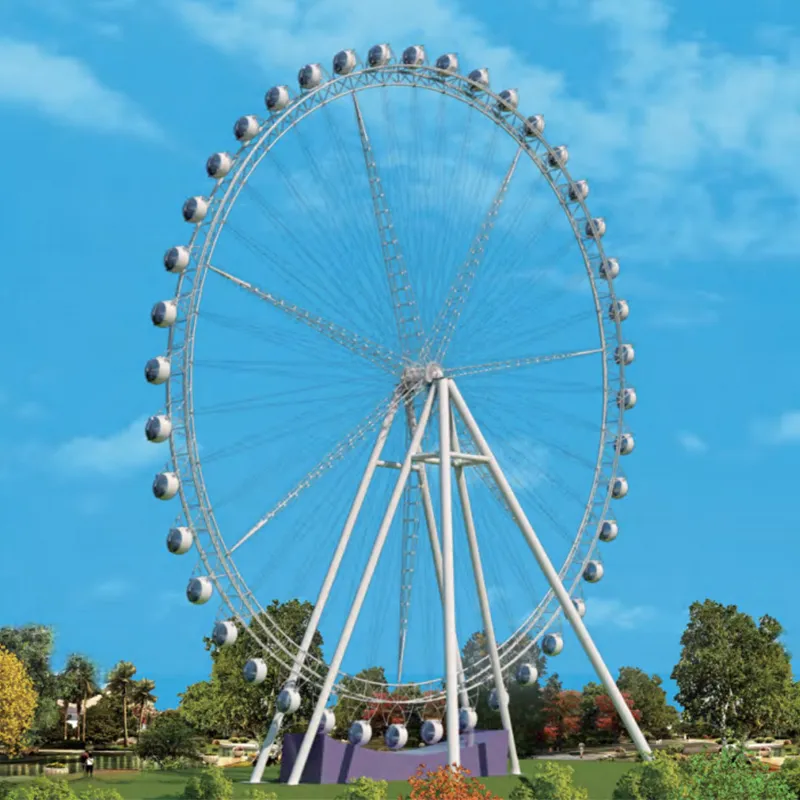- Albanian
- Arabic
- Belarusian
- Bengali
- Czech
- English
- French
- German
- Hebrew
- Hungarian
- Indonesian
- irish
- Italian
- Japanese
- kazakh
- Persian
- Russian
- Thai
- Uzbek
- Vietnamese
Understanding the Expenses Involved in Building a Ferris Wheel Project
The Costs of Running a Ferris Wheel A Comprehensive Analysis
Ferris wheels are iconic structures found in amusement parks, fairs, and city skylines around the world. They offer breathtaking views and a nostalgic experience for riders of all ages. However, behind the joy they bring lies a complex financial structure that governs their operation and maintenance. This article aims to provide an in-depth analysis of the costs associated with running a Ferris wheel, touching on aspects such as initial investment, operational expenses, and maintenance costs.
Initial Investment
The first and most notable expense when erecting a Ferris wheel is the initial investment. The price of a Ferris wheel can vary significantly based on its size, design, and material. A standard, mid-sized Ferris wheel may cost around $1 million to $2 million, while larger, more elaborate models can run upwards of $10 million or more. This investment includes the cost of engineering and design, as well as permits and installation.
In addition, the location plays a critical role in the overall costs. If a Ferris wheel is being installed in a busy urban area, one could expect to encounter higher land costs, zoning regulations, and potential infrastructure requirements. Therefore, the initial stage of launching a Ferris wheel is not just about the wheel itself but also the environment in which it will be placed.
Operational Expenses
Once the Ferris wheel is operational, the focus shifts to the day-to-day expenses. Key operational costs generally include staffing, utility bills, insurance, and marketing.
1. Staffing Depending on the size of the operation, staffing can be one of the most significant ongoing expenses. An operator needs to hire attendants to ensure the safety and smooth running of the rides. Staff must be trained in safety protocols, customer service, and emergency procedures. Salaries can quickly add up, particularly if the Ferris wheel operates in a popular area requiring a larger team.
2. Utilities Electricity is another substantial cost, especially for larger Ferris wheels equipped with lights and digital displays. The fluctuation of energy prices can also impact operational budgets. Other utilities, such as water for hygiene purposes, need to be accounted for too.
ferris wheel cost

3. Insurance Given the nature of amusement rides, insurance is a must. Amusement liability insurance protects operators from legal claims and accidents. Annual premiums can range from a few thousand to tens of thousands of dollars, contingent upon the size and location of the Ferris wheel.
4. Marketing Promoting the Ferris wheel can require a dedicated budget for local advertising, social media campaigns, and special promotions to attract visitors. A successful marketing strategy can significantly impact ticket sales, making this expense crucial for profitability.
Maintenance Costs
Ongoing maintenance is another critical cost element. A Ferris wheel, like any mechanical system, requires regular inspections and maintenance to ensure safety and efficiency. This includes
1. Routine Inspections Ferris wheels must undergo regular inspections, which can involve structural assessments and safety checks. These inspections are typically mandated by local regulations and can cost several thousand dollars annually.
2. Repairs and Replacements Over time, parts will wear out and need replacing. This could include the wheel itself, gondolas, electrical systems, and structural components. Depending on the extent of required repairs, these costs can vary widely.
3. Seasonal Preparations For Ferris wheels located in regions with seasons, there may be additional costs associated with preparing for winter. This can include disassembly, storage, and re-erection in the spring, which demands both labor and materials.
Conclusion
The operational landscape of Ferris wheels is layered with complexity and financial nuance. From the hefty initial investment to ongoing operational and maintenance costs, these amusement rides require careful financial planning and management to be successful. Understanding these costs can help potential operators make informed decisions about entering the amusement industry, ensuring not only the safety of the ride but also its profitability in the long run. As the saying goes, the view from the top is excellent, but the climb can be costly!
-
Flume Ride-Hebei Zhipao Amusement Equipment Manufacturing Co., Ltd.|Thrilling Water Attraction&Customizable DesignJul.30,2025
-
Flume Ride - Hebei Zhipao Amusement Equipment | Water Coaster, Thrilling DescentJul.30,2025
-
Flume Ride - Hebei Zhipao | Thrilling Water AttractionJul.30,2025
-
Flume Ride: Thrilling Water Attraction by Hebei Zhipao|Log Flume Manufacturers&Flume Ride DesignJul.30,2025
-
Flume Ride-Hebei Zhipao Amusement Equipment Manufacturing Co., Ltd.|Thrilling Water Coaster, Safe DesignJul.30,2025
-
Flume Ride-Hebei Zhipao Amusement Equipment Manufacturing Co., Ltd.|Thrilling Water Attraction, Safe DesignJul.30,2025
